Archived Storm Damage Blog Posts
Spotting Storm Damage: A Guide to Recognizing Property Damage After a Storm
1/16/2024 (Permalink)
 When nature strikes, it often leaves behind a trail of destruction that requires immediate attention.
When nature strikes, it often leaves behind a trail of destruction that requires immediate attention.
When nature strikes, it often leaves behind a trail of destruction that requires immediate attention. Identifying storm damage is crucial to kick-starting the restoration process efficiently. In this blog, we'll walk you through the essential steps to recognize storm damage on your property.
Understanding the Types of Storm Damage
- Roof Damage
Winds, hail, or fallen debris during storms can severely impact your roof. Look for missing shingles, cracks, dents, or water stains in your attic or ceiling.
- Structural Damage
High winds can weaken the structure of your property, causing cracks in walls, foundations, or even structural warping.
- Water Damage
Heavy rains or flooding can lead to water intrusion, causing damage to walls, floors, and belongings. Check for signs of water stains, mold, or musty odors.
- Tree Damage
Fallen trees or branches can cause significant damage to your property. Inspect for broken windows, structural damage, or debris scattered around the area.
Steps to Identify Storm Damage
Safety First: Before assessing damage, prioritize safety. Check for any immediate hazards, such as downed power lines or unstable structures.
Exterior Inspection: Walk around your property to spot any visible signs of damage. Look for dents, cracks, missing materials, or displaced items.
Roof Inspection: Inspect your roof for missing or damaged shingles, dents, or holes. Use binoculars for a closer look if climbing onto the roof isn’t safe.
Interior Assessment: Check ceilings, walls, and floors for water stains, leaks, or any visible signs of damage.
Professional Inspection: For a thorough evaluation, contact a trusted restoration company like SERVPRO of Baytown/Channelview. Our experts have the tools and expertise to assess hidden damages accurately.
Why Immediate Action is Essential
Ignoring storm damage can lead to more significant issues down the line, such as mold growth, structural weakening, or increased repair costs. Taking prompt action not only ensures your safety but also prevents secondary damage.
How SERVPRO® Can Help
At SERVPRO of Baytown/Channelview, we understand the urgency of storm damage restoration. Our trained technicians promptly respond to assess and mitigate damages. Using advanced equipment and proven techniques, we restore your property to its pre-damaged condition efficiently.
Identifying storm damage early is crucial for a swift and effective restoration process. Regular inspections and immediate action can minimize the impact and costs associated with such damages. Remember, your safety is paramount.
Stay safe, stay prepared!
Effective Emergency Storm Response Planning in Houston
9/26/2023 (Permalink)
Houston, TX, a city prone to severe weather events like hurricanes and heavy rainfall, requires homeowners and property owners to be well-prepared for emergencies. Developing a comprehensive emergency response plan is crucial for safeguarding lives, and properties, and ensuring a swift recovery. In this blog, we'll explore the importance of emergency response planning for storms in Houston and provide actionable steps to help you create an effective plan tailored to the region's unique challenges.
Understanding Houston's Storm Challenges
Houston faces a range of storm-related challenges, including hurricanes, tropical storms, heavy rainfall, and flooding. The city's flat terrain and complex drainage systems can exacerbate flooding, making proactive emergency response planning a necessity for residents.
Develop a Family or Business Emergency Plan
Whether you're a homeowner or a property owner, creating an emergency plan is essential. This plan should include communication strategies, evacuation routes, meeting points, and a list of emergency contacts. Assign specific responsibilities to family members or employees to ensure a coordinated response.
Stay Informed
Regularly monitor weather forecasts and alerts through local news, weather apps, and official sources like the National Weather Service. Understanding the timing and severity of incoming storms enables you to take timely action.
Designate Safe Areas
Identify safe areas within your property or building where you can seek shelter during a storm. These areas should be away from windows and doors, preferably in an interior room or hallway.
Protect Important Documents
Secure vital documents like insurance policies, identification, and property records in waterproof containers. In the event of property damage, having access to essential documents facilitates the recovery process.
Stock Up on Emergency Supplies
Prepare an emergency kit containing essential supplies such as non-perishable food, water, medications, first-aid items, flashlights, batteries, and personal hygiene products. Ensure the kit is easily accessible and periodically update its contents.
Secure Outdoor Items
Outdoor furniture, equipment, and decorations can become projectiles during storms. Anchor or store these items indoors to prevent them from causing damage or injury.
Implement Flood Preparedness Measures
Houston's vulnerability to flooding underscores the importance of flood preparedness. Elevate utilities, install flood barriers, and consider flood insurance to protect your property from water damage.
Communicate and Practice
Regularly review your emergency plan with family members, employees, or tenants. Conduct drills to practice evacuation procedures and ensure everyone is familiar with the plan's protocols.
Crafting a comprehensive emergency response plan tailored to the storm challenges in Houston, TX, is a critical step in safeguarding your loved ones and property. From developing a family or business emergency plan to staying informed, designating safe areas, protecting important documents, and stocking emergency supplies, these measures will help you navigate storm-related emergencies effectively. By taking proactive steps and staying prepared, you can mitigate risks, reduce potential damage, and ensure the safety of your home, family, and property during storms.
What To Do Before and After a Tornado
1/9/2023 (Permalink)
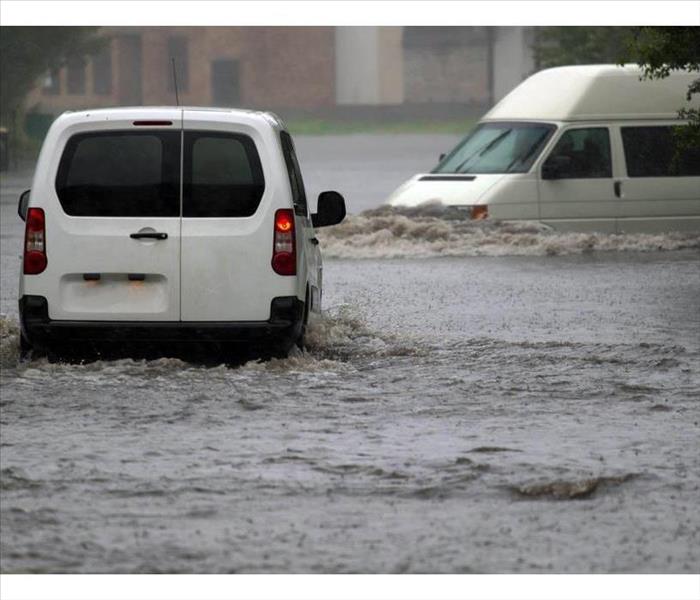 Do not drive on flooded roads
Do not drive on flooded roads
Before, During, and After the Tornado
In the event of a tornado, you need to take precautions in order to stay safe. Here's how to prepare for a potential tornado and what to do in the aftermath of one.
Tornado Preparation
If you know there's a high risk of tornadoes in your area, take the time to learn about how to prepare for one. Tornadoes can happen anywhere, so it's important to be prepared no matter where you live. Familiarize yourself with the types of storms that produce tornadoes and what their warning signs are so that if one does occur, you'll know how to respond.
You will want to pick out a small interior room with no windows on the lowest level of your home as your safe spot. If you have a basement, this is a great place to choose. Know how to get to this place quickly, and ensure you are able to grab pillows, blankets, shoes, couch cushions, mattresses, and anything else that might be beneficial for taking cover and protecting yourself and your family.
During a Tornado
When a tornado warning is issued, go immediately to the place you have chosen as safe, such as a basement or interior room on the lowest floor. Stay away from windows and doors, which can be blown in by violent winds.
Pay attention to local alerting systems: for current emergency information and instructions, including tornado warnings issued by National Weather Service meteorologists, who monitor conditions nationwide 24 hours a day, 7 days a week (www.weather.gov/alerts).
Protect yourself: by wrapping your arms around your head or neck; or by having furniture or blankets placed around you to protect against flying debris; or by lying flat on the low-lying ground outside of any structure (e.g., “take cover”).
Never attempt to escape a tornado in a car. If outside when a tornado touches down, move immediately toward shelter or an underground location. If these aren't available or aren't accessible quickly enough, find shelter under something that won't collapse on top of you such as a sturdy car or tabletop; if those aren't available either (and they often aren't), lie flat on low ground away from trees and cars; cover yourself with anything heavy like blankets or pillows (if they're handy).
After a Tornado
After a tornado, there are many things that need to be done. Here are some helpful tips on how to stay safe after a tornado:
Stay away from debris and downed power lines. Do not touch them or anything that may have come into contact with them, such as fences or trees. This is extremely important because the electrical current in the wire can cause serious harm if you come in contact with it, even if it is not visibly damaged.
If you need help getting out of your home due to injury or other issues, call 911 immediately so an ambulance can pick you up and take care of any injuries needed while being transported to the hospital.
Do not drive on flooded roads. Flooded roads can be very dangerous since they may be washed out under water levels that look like they're only inches deep but actually go much deeper than what meets your eye! You could end up losing control of your car easily when driving through water like this because it will reduce traction between tires and road surface (which happens when there's too much moisture).
While tornadoes are a scary, unpredictable phenomenon, there are ways to mitigate the risks and stay safe. By preparing yourself and your family, monitoring local weather conditions, and knowing what to do at home or in a building when one hits nearby, you can help ensure that your community is ready for whatever nature throws its way.
If you experience tornado damage in your Baytown, TX home or business, give SERVPRO of Baytown/ Channelview a call! We will be here to help!
3 Tips for Maintaining Your Building's Exterior
8/31/2022 (Permalink)
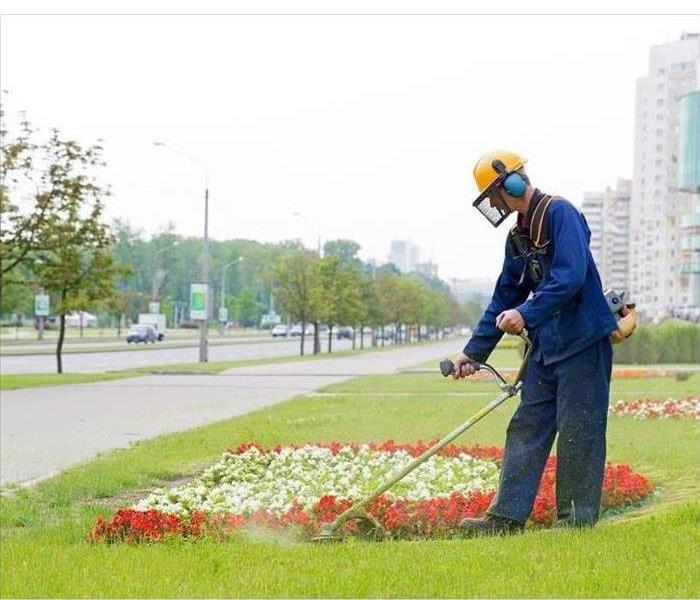 Exterior maintenance is one of the key ways that you can prevent storm damage to your building
Exterior maintenance is one of the key ways that you can prevent storm damage to your building
Prevent Storm Damage To Your Building
Storm season is approaching in Lynchburg,TX, so now is the time to think about maintaining the exterior of your office building. Your landscape and pick up litter but how often do you have your building inspected by a professional? If you can't remember the last time, it's important to do it now. Exterior maintenance is one of the key ways that you can prevent storm damage to your building.
1. Examine the Walls
Keep an eye out for some seemingly less obvious concerns. Say there's a drafty room inside. Where is the air coming from? There's sometimes a little leak in the basement after a hard rain. How is the water getting in? Ordering a building inspection to be done by a professional will go a long way in preventing small problems from becoming big ones.
2. Pay Attention to Problem Areas
You know that there are a few cracked spots in the bricks or that there are some small holes in the cladding. If you've been ignoring the problems you can see, imagine what's going on underneath. Keeping your building maintained isn't just for looks. Those problems that you can see might indicate other issues. By repairing the problems as they appear, you can keep your to-do list short and your costs low.
3. Take a Closer Look at Vulnerable Spots
Weather stripping, windows, and insulation degrade more quickly than other aspects of your building's exterior. Even if your windows were recently installed, keep a close eye on them to make sure that they seal and latch properly. Completing this exterior maintenance task can also keep your heating and cooling costs down.
When Restoration is Needed
Sometimes you discover larger issues, or storm damage causes new ones. A commercial restoration company can help you assess and repair the damage quickly and efficiently.
Regular exterior maintenance not only keeps your company looking good, but it can prevent small problems from becoming big ones.
Tips When Making a Flood Damage Claim
6/21/2022 (Permalink)
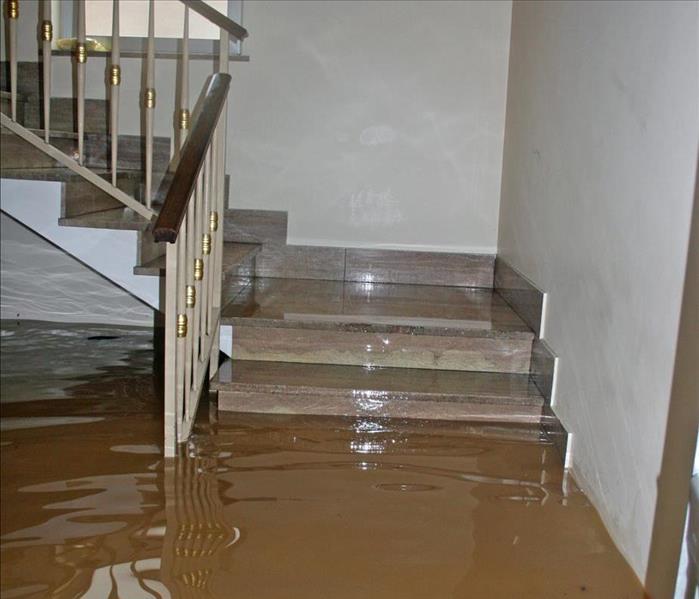 Flood damage in a home in Galena Park, TX.
Flood damage in a home in Galena Park, TX.
When Filing a Flood Damage Claim, Here Are Some Pointers to Keep in Mind
If you are suffering from devastating flood damage in your home, the whole ordeal can seem overwhelming. To ease the pain after such a storm, it is important to learn as much as possible about the claims process.
1. Be Prepared to Leave the Premises
If the entire home has been compromised with flood water, it is best to leave the house until an expert can inspect it thoroughly. If you can safely reach the electrical and gas service units, make sure the power is turned off.
2. Call Your Insurance Agent to File a Flood Claim
It is important to become familiar with your insurance policy so that you know the extent of your coverage. Flood damage isn't covered under your general homeowner's insurance policy, so you need to have a separate flood insurance policy. Floor insurance must be purchased through the Federal Emergency Management Agency, also known as FEMA.
To make the insurance claim, contact your agent as soon as possible. They will send out an adjuster to inspect your home and determine how much it will cost to renovate your home and replace the damaged belongings.
Your insurance adjuster in Galena Park, TX, will need a list of all furnishings, structures and personal items that have been damaged or destroyed. It will speed up the flood claim process if you make a detailed inventory of everything lost. Take as many pictures as you can.
3. Contact a Water Damage Restoration Professional
It is critical to address the water problem as quickly as possible to reduce the risk of further damage. Choose a storm damage cleanup company that is experienced in handling water damage and mold. They will inspect the damage and work quickly to mitigate the situation. It is best to contact a professional even before the flood claim has been processed.
Take some of the pain out of the flood damage claim process with some helpful tips.
Mitigation Versus Restoration: How Do They Differ?
4/18/2022 (Permalink)
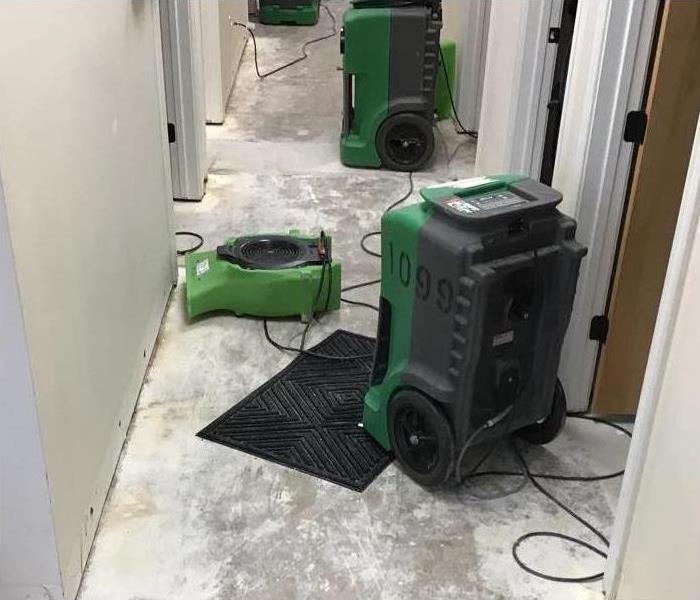 Storm damage in a commercial property in Channelview, TX.
Storm damage in a commercial property in Channelview, TX.
What Are the Differences Between Mitigation and Restoration?
When flooding and violent storms strike your Channelview, TX, business, the aftermath can leave you reeling. Between damaged inventory and ruined building materials, you may not know where to begin when it comes to salvaging your property. Working with a flood cleanup company may help you to better understand the process, especially when it comes to the differences between mitigation and restoration.
What Is Mitigation?
When your property first suffers from storm damage, your emergency response team will come out and perform mitigation tasks that may help reduce the effects of future damage. This may involve a variety of processes, including:
- Using tarps to cover leaks in the roof
- Removing standing water
- Blocking off areas to protect them from secondary flooding
Mitigation protects your business from suffering further damage before the restoration process begins. Your restoration company will likely advise you about which steps they plan to take so you remain in the loop and can better plan an eventual reopening strategy.
What Is Restoration?
Restoration takes place once your flood cleanup company has reviewed all the damage and taken steps to reduce its effects. The restoration process will probably include actions such as flood cuts, which include cutting into the drywall approximately a foot or so above the flood line to inspect the interior for any problems, such as wet insulation. Existing wet insulation cannot be dried, so your restoration professionals will likely replace it instead.
How Far Apart Does Each Action Happen?
Depending on the degree of storm damage your property suffers, mitigation and restoration may take place close together, such as in the case of minor flooding paired with roof damage from high winds. The greater the damage, the longer it may take for restoration to begin. Your flood cleanup company representatives can help guide you through the process so you feel more comfortable about the outcome.
Your Channelview, TX, business is likely a major financial and emotional investment, and both can take a hit when storm damage strikes. Understanding the mitigation and restoration process may offer you peace of mind when you need assistance after a major storm.
3 Ways to Mitigate Roof Damage
3/30/2022 (Permalink)
 Take care of any problem you have found on your roof.
Take care of any problem you have found on your roof.
Three Ways to Prevent Roof Damage
When you live in Galena Park, TX, roof damage may occur due to varying weather conditions. It's important to do what you can to mitigate any potential problems before they leave lasting damage to your home. Some things you can do include
1. Regularly Inspect your Roof
Performing a regular inspection of your roof can allow you to look for any water, storm or wind damage that may have occurred. Many experts recommend having an inspection performed biannually. You may also want to look a roof over after any severe storms or weather.
3. Take Care of Problems As they Occur
One important mitigation tip to keep in mind when dealing with roof damage is to take care of any problems as they occur. This may keep a small problem from turning into a larger issue down the road, and also keep you in compliance with your homeowner’s insurance policy. Additionally, making small repairs as necessary may help prevent a costly roof replacement down the road.
4. Contact a Professional
If you are unsure how to properly care for a roof, or what repair sets may be necessary for any damage you may find, then you may want to contact a storm damage restoration professional. A professional service often has the equipment, materials and tools necessary to perform any repairs as efficiently and safely as possible. They should also be able to answer any questions or concerns you may have about your roof.
If you're worried about roof damage to your Galena Park, TX, home, you may want to consider taking some of these steps mitigate potential problems. Doing a regular roof inspection will it allow you to be aware of the condition of your roof and take care of any problems as they occur. If you have any doubt as to the severity of the damage or what steps may need to be taken, a professional may be able to help.
Is It Possible to Flood Proof Your House?
1/11/2022 (Permalink)
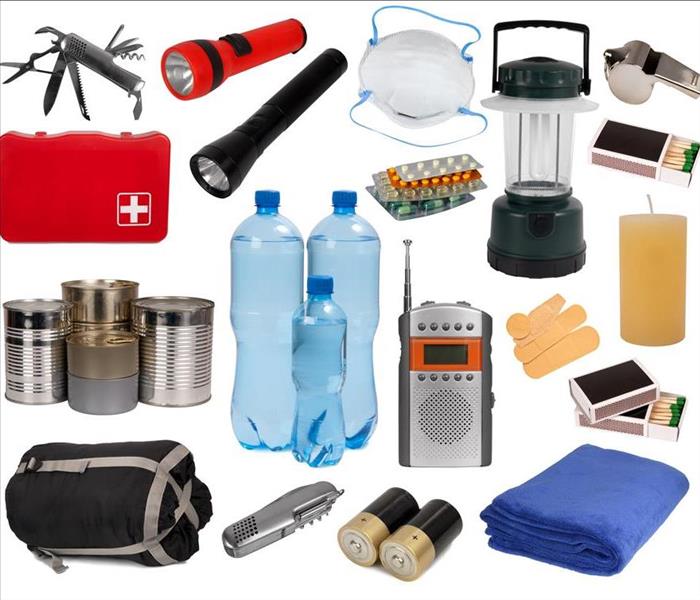 Gather safety supplies if you plan to remain at home during a floor.
Gather safety supplies if you plan to remain at home during a floor.
Safety Tips If You Live In an Area Prone To Flooding
A flood may seem impossible to avoid, particularly if your home is located in a flood zone in Liberty, TX. While you may not be able to make your residence flood proof, you should take flood safety measures. Here are several safety tips to keep in mind if you live in an area prone to flooding.
Elevate Critical Contents
Protect contents from water damage by lifting or moving items to a higher floor. This measure may also lower the risk of electrocution or other safety hazards in a flooded house. Try to elevate:
- Appliances
- Circuit breakers
- Electrical connections and wires
- Furniture
- Valuables
Factor in the anticipated level of flood waters when deciding whether to elevate items on cinder blocks, raised surfaces such as tables, or move contents to a higher floor of your home.
Gather Safety Supplies
If you plan to remain at home during a flood, you should have the following flood safety equipment:
- A first aid kit
- Enough food and water for at least several days
- A battery-powered radio
If you have a generator, make sure you have enough fuel. Operate this appliance outside to prevent carbon monoxide from building up inside your home.
Block Rising Water
Residents of regions prone to flooding may want to keep materials for sandbags on hand. These include
- Burlap bags
- Sand
- Shovels
- Plastic sheeting
You may also want to invest in a sandbag alternative. Be sure to factor in the predicted level of flood water to determine whether these materials will be an effective deterrent for flood water.
 When nature strikes, it often leaves behind a trail of destruction that requires immediate attention.
When nature strikes, it often leaves behind a trail of destruction that requires immediate attention.





 24/7 Emergency Service
24/7 Emergency Service





